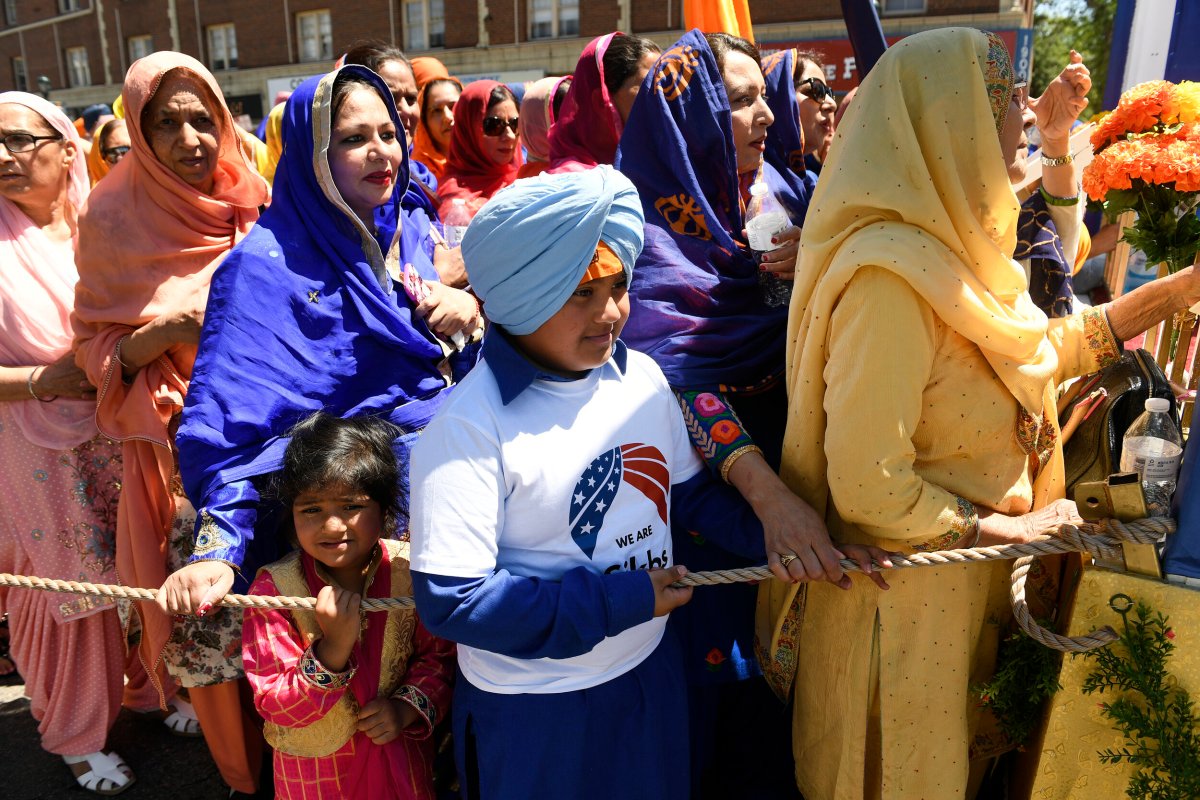
As a scholar of race and religion, I don’t get many points from my academic peers for writing a children’s book. But as a racial justice activist, nothing feels more urgent. It’s unacceptable that young adults continue arriving into my classroom ill-equipped to deal with the diversity of our world.
By not giving our children the opportunity to see the humanity in everyone they meet, we are setting them up for failure. We have to start this process from a young age.
The same is true with how the media covers (or doesn’t cover) Sikhs in modern America. We wait until a tragedy occurs, and then we start paying attention to Sikh communities. The 2021 shooting in Indianapolis. The 2013 brutal beating of a Sikh professor in New York City. The 2012 massacre of Sikhs in Oak Creek, Wisconsin. The 2001 murder of Balbir Singh Sodhi.
Newsrooms scramble to incorporate introductory information on who Sikhs are. Digital outlets publish explainers on the Sikh religion. I oblige with these when asked, because it’s important work. But each time, the same thought races through my mind: “Isn’t it too late? People are already dead, the damage once again is already done.”
“That we are only represented in moments of tragedy is dehumanizing and inauthentic. We’re never just passive victims – even in moments of tragedy.”
As a Sikh who works frequently in media spaces, I also wonder about what we could be doing better: “Could more inclusive coverage help humanize groups that are otherwise dehumanized and rendered invisible? By being more intentional about lifting up stories from the margins, could we help mitigate hate and potentially save lives?”
The challenge before us is one of journalistic ethics. What is our responsibility in authentically telling the stories of our world?
As you reflect on this question, consider my lived experience as a Sikh. I appreciate that the media has been doing a better job recently of covering anti-Asian hate. And at the same time, that we are only represented in moments of tragedy is flattening, dehumanizing, and inauthentic. We’re never just passive victims – even in moments of tragedy. There’s so much more to who we are, both as a community and as individuals. To fail to represent the fullness of our humanity is to misrepresent us, too.
I don’t share these feelings to place blame or judgement. I’m also under no illusion that more inclusive coverage and enhanced cultural literacy will solve racism. Rather, I bring this forward as part of the media fraternity with the knowledge that we can do better, not just in how we cover Sikh communities, but how we cover all marginalized communities. Sometimes, just feeling the pain of others and seeing the world from their eyes can help us do better.
With regard to covering Sikhs and their traditions, I could offer plenty of advice (and I will!). But all of my suggestions revolve around one key point: If you truly care about covering diverse communities responsibly and with authenticity, doing better requires proactive effort. It means finding stories that are typically unrepresented; finding sources who are typically ignored; finding angles that are typically overlooked. Each of these takes work. We all know that. But there’s a significant upside, too. All of these together will enhance reporting tremendously.
“Inclusive reporting is not just about representing communities that are underrepresented. It’s also about showing the complexities that they all carry.”
As a former board member for the Religion News Association, I’m aware that one of the greatest obstacles to covering Sikhs is the dearth of accessible information about the tradition. That’s why I partnered with the Sikh Coalition and the Religion News Foundation a few years back to write a reporter’s guide to covering Sikhism. It is available for free download here. I encourage you to bookmark it and to share it with your colleagues.
The same general rules that apply to quality journalism pertain with coverage on Sikhs, too. Develop relationships. Be Curious. Stay connected. Reporters should also interview Sikhs and people from other marginalized groups as experts for stories that don’t have to do with religion or identity — including for stories about health, education and government. These practices help us overcome our assumptions about marginalized groups, including one of the most pernicious in journalistic circles: that these groups are one-dimensional, that they only care about their most salient identities, and therefore have nothing else worthy of bringing forward.
Connecting with Sikhs, whether in-person or online, will also help solve the story idea problem. Some of the best stories I have seen on Sikhs – including local efforts to support the farmers’ protest in India, the Sikh truck-driving circuit, and serving langar during the pandemic – have come out of direct conversations with reporters, who have reached out to ask: “What are some issues Sikhs are talking about that might be newsworthy?”
Having multiple touchpoints is also important, because as with all groups, Sikhs are diverse. No single viewpoint represents the viewpoint of an entire community.
Inclusive reporting is not just about representing communities that are underrepresented. It’s also about showing the complexities that they all carry. Doing so helps us all go beyond our overly simplified and inaccurate assumptions about one another – including the stereotypes we unintentionally produce when we only talk about Sikhs in moments of tragedy.



